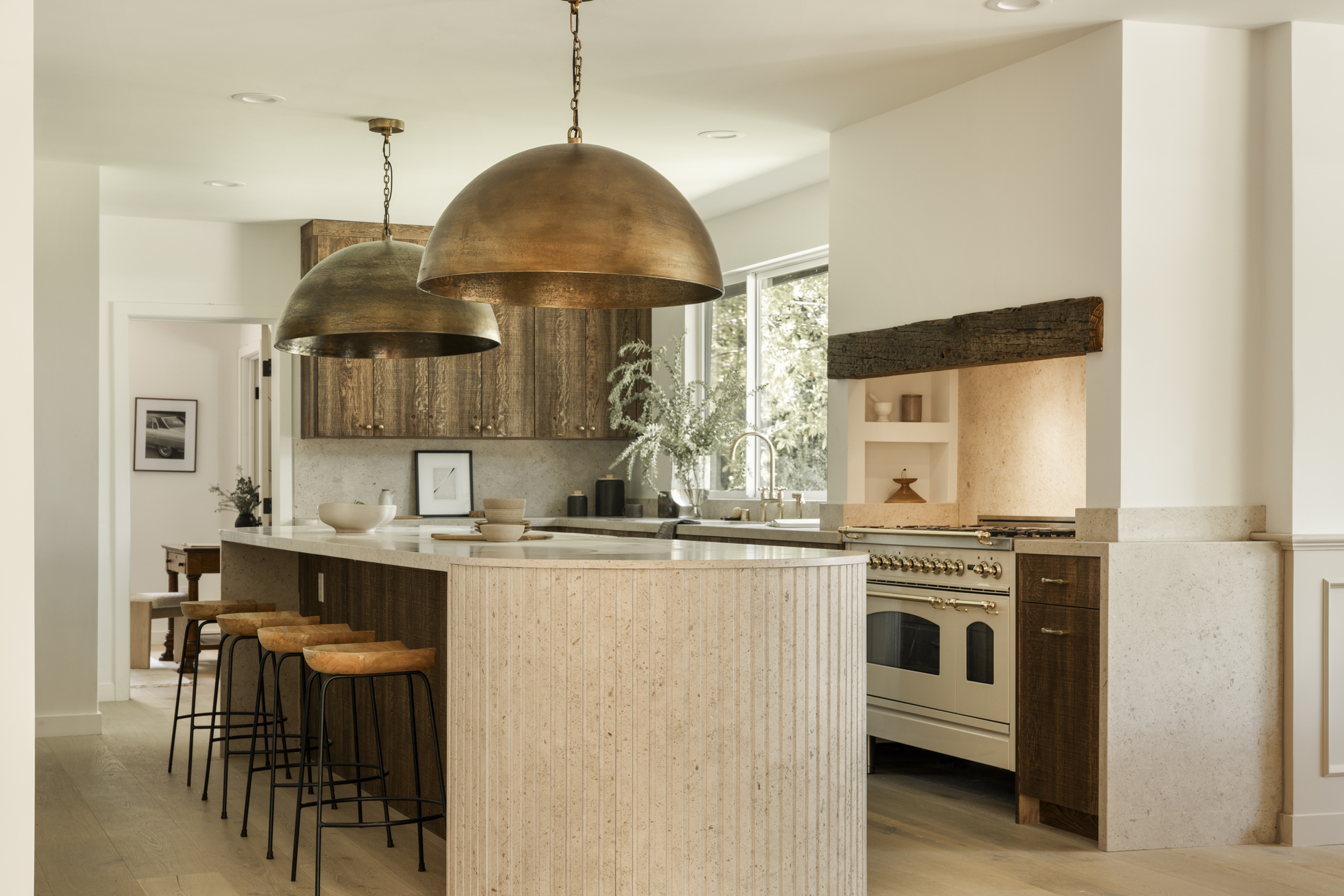
Raw wood tones are everywhere right now. From wooden kitchen cabinetry and wainscoting to molding and millwork, everyone seems to be bringing an organic touch to their interiors this year. That said, solid wood is a pricey investment, and this heavy material becomes a huge undertaking if used to renovate. But what if you could get the same look for less using a simple DIY?
We're not talking about veneer or plywood here. Instead, we're talking about paint. Forget expensive timber frames and days lost to remodeling — it's easy to recreate the look of a natural grain with some brown paint and a genius little tool called a wood grain rocker. Done properly, it's a far more authentic finish than you ever imagined. Trust us when we say, this paint technique needs to be seen to be believed.
Faux boi has taken many forms over the years, but it really can be as simple as a tin of paint and a clever little tool to mimic a grain effect. If you've always dreamed of a period home with wood-paneled walls, you can now bring your vision into reality (if you're prepared to designate enough time for the task, that is).
Home renovator Jayme Squires demonstrated in an Instagram reel how she used this faux wood technique throughout her kitchen and we were in disbelief at how effective the paint idea is. Using a kit from "liquid paint" brand Retique It, available from Amazon, she transformed her bland white kitchen cabinets into a warm and welcoming haven.
How does this mystifying process work, you ask? All Jamie had to do was a three-step DIY. First, she painted her cabinets with Retique It's "Liquid Wood Coating," applied one of the brand's gel stains (she chose the color Pecan), and then went over the wet gel with a wood grain tool. Thanks to a special formula that contains real wood fibers, the first coating makes hard surfaces easily stainable without having to sand or strip beforehand. The wood graining tool simply glides over the gel for a defined knotted effect. (She even added foam wood-effect beams to finish her cottage look.)

Retique It's products come with everything you need to complete the look yourself, but you can use these wood graining tools on any paint of your choosing, too. That's exactly what Matthew Bettencourt, Principal Designer at BETTENCOURT MANOR, did to achieve a mahogany millwork effect in a recent project (pictured above).
"We had just returned from a trip to Paris where we had fallen in love with all the wood facades on the buildings and, upon closer inspection, noticed some were created using a faux bois/trump l'oeil effect," Matthew explains. "We were lucky that we already had a white paneled wall to start with and we thought adding this technique would add some sophistication to the space."
To achieve this convincing wall paneling idea, Matthew used Sarsaparilla by Glidden as a base coat and topped with the shade Mission Brown by Behr, and he says it's an easy DIY for anyone to try themselves. "First, clean the walls thoroughly to remove any dirt, grease, or dust, and sand the walls lightly to create a smooth surface," he says. "Once the base coat is dry, apply a second coat of satin paint in a darker shade than your base coat. This will serve as the contrast color for your faux wood grain."
He then used a wood-graining tool over the paint to imitate natural wood. You can use a graining rocker available from Walmart, as Matthew has done, or use a comb or roller. "After applying your top coat, use the graining tool by dragging it along the wall in long, continuous vertical strokes to create the grain pattern," he says. "Vary the pressure and direction of the strokes to mimic the natural variation in wood grain." Afterward, he used a dry brush technique to lightly blend and soften the grain pattern.
The best thing about this approach allows you to customize your colors to suit the rest of your interior, whether you want a lighter wood tone or a darker one. "Because our space is filled with a mix of contemporary and vintage pieces, we feel it helps create the right balance," says Matthew. "It adds a layer of tradition that juxtaposes some of our more modern elements and creates an almost moody backdrop."
If you're looking to add some wooden accents to your home, this paint DIY is the most accessible choice out there. Whether you want an all-over wood panel or just the odd accent throughout your wood kitchen, this technique allows you to get the look without splurging on the cost of solid wood or risking huge reno mistakes (plus you can have fun with it in the process - that's a real win-win).







